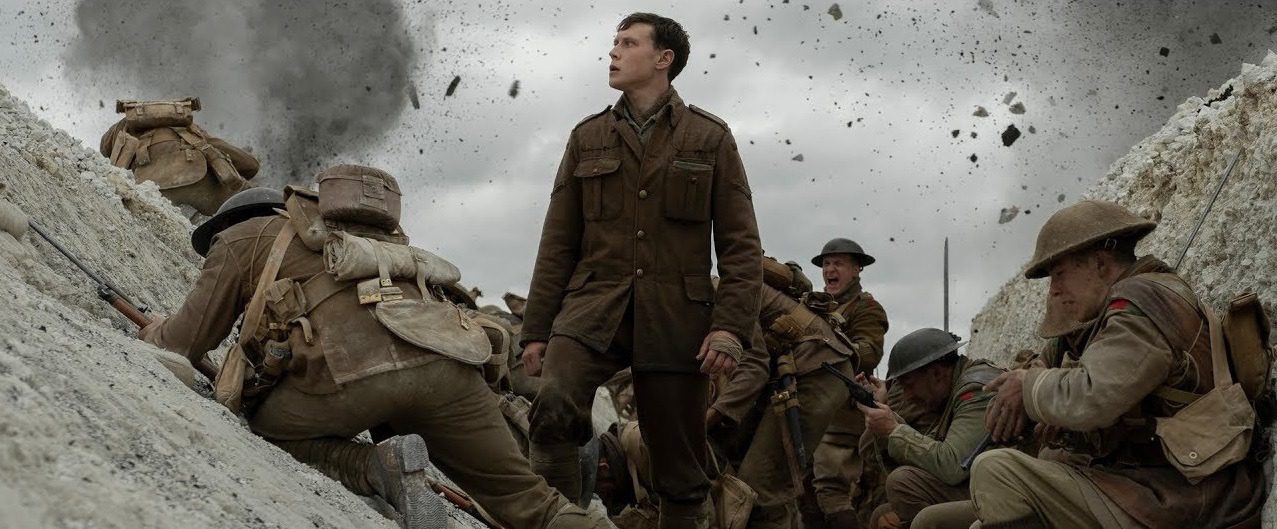1917 (2019)
Universal Pictures
Directed by: Sam Mendes
Written by: Sam Mendes & Krysty Wilson-Cairns
Starring: George MacKay, Dean-Charles Chapman, Mark Strong, Andrew Scott, Richard Madden, Claire Duburcq, with Colin Firth, and Benedict Cumberbatch
We’ve been sitting here since Christmas, 1914, during which millions of men have died, and we’ve advanced no further than an asthmatic ant with some heavy shopping.
–Blackadder Goes Forth
Note: If you plan on seeing this film, please first seek out the Peter Jackson documentary They Shall Not Grow Old, as it will provide a richer context for 1917.
Two soldiers are responsible for the lives of 1600 in Sam Mendes’ 1917. After their battalion’s communications have been cut, it falls on Corporals Blake (Dean-Charles Chapman) and Schofield (George MacKay) to physically deliver a message to an English regiment that they are entering a trap. It’s not a mission they relish, but it is a mission they take with little hesitation. Especially since Blake’s brother is among the forces potentially entering the trap. And it’s a mission neither we nor the camera can tear away from.
For 1917’s chief hook is its camera: there has been much publicity made of the fact that the whole film is shot in one take. And while this is certainly a technical marvel, it is only the most prominent of the film’s strengths, strengths which include the two lead actors. Blake and Schofield, by design, are given very little in the way of backstory. There is the aforementioned brother, yes, but little else. What carries the two of them through, however, are the performances by MacKay and Chapman. By alternate turns frightened, excited, and horrified by the war around them, MacKay and Chapman never let us forget that, through their fright, awe, humor, horror, and excitement, these are still boys. Young men whose lives have scarcely had a chance to begin. Lives they are now fighting for in a stretch of No Man’s Land that they probably could not have located on a map a year prior.
And in No Man’s Land, we see just what a place where millions of men have died for inches looks like. It’s a hellish, otherworldly place, with bloated corpses lining every foxhole. With rats that gnaw at those corpses, and with a constant, reliable soundtrack of gunfire and artillery shells. But with those sounds comes a familiarity for the audience. Indeed, as the camera constantly moves and follows the two soldiers, one thing is the cause for the most tension: silence. It is in moments of silence where the fear of the unknown is the greatest. Whether Blake and Schofield are alone together, or if someone else is being deliberately silent nearby.
As it unfolded, I was surprised that the film I was most reminded of was not a work like Saving Private Ryan or Dunkirk. Rather, it was a similarly titled film set during the Troubles in Ireland: ‘71. Despite being set nearly 60 years apart, both films focus on untested young men caught in frightening new territory they do not understand, surrounded by people who wish to kill them. And in comparing the two, I came to an unexpected realization: the causes of war may change. The combatants may shift. The weaponry will certainly modernize. But the fear of death that pushes a soldier will always be the same no matter the era.

